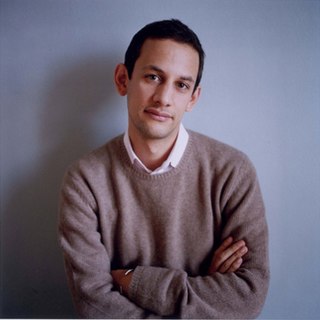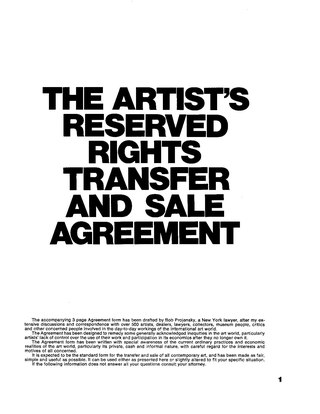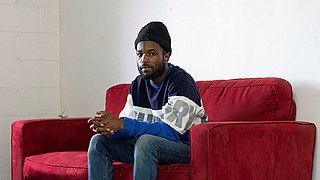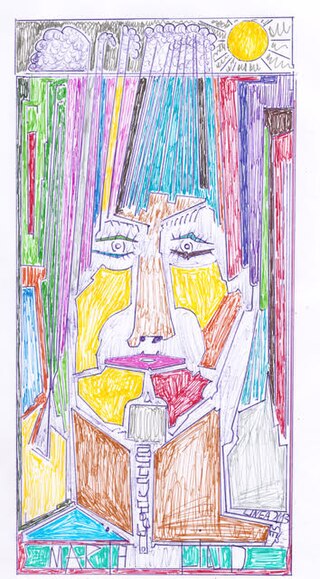Related Research Articles
Carey Young is a visual artist whose work is often inspired by law, politics and economics. The tools, language and architectures of these fields act as material for her videos, text works, performances and photographs, often developing from the professional cultures she explores. In her early video works, she donned attire appropriate to the business and legal worlds, enacting scenarios which examine and question each institution's power to shape society and individual identity. Since 2002, Young developed a large body of work addressing and critiquing law in relation to ideas of site, gender and performance. Young teaches at the Slade School of Fine Art in London where she is an Associate Professor in Fine Art.

Hans Ulrich Obrist is a Swiss art curator, critic, and historian of art. He is artistic director at the Serpentine Galleries, London. Obrist is the author of The Interview Project, an extensive ongoing project of interviews. He is also co-editor of the Cahiers d'Art review. He lives and works in London.
David Robbins is an American artist and writer who was one of the first to investigate the art world's entrance into the culture industry.

Jens Hoffmann Mesén is a writer, editor, educator, and exhibition maker. His work has attempted to expand the definition and context of exhibition making. From 2003 to 2007 Hoffmann was director of exhibitions at the Institute of Contemporary Arts London. He is the former director of the CCA Wattis Institute for Contemporary Art from 2007 to 2016 and deputy director for exhibitions and programs at The Jewish Museum from 2012 to 2017, a role from which he was terminated following an investigation into sexual harassment allegations brought forth by staff members. Hoffmann has held several teaching positions including California College of the Arts, the Nuova Accademia di Belle Arti and Goldsmiths, University of London, as well as others.

Seth Siegelaub was an American-born art dealer, curator, author, and researcher. He is best known for his innovative promotion of conceptual art in New York in the 1960s and '70s, but was also a political researcher and publisher, textile history bibliographer and collector, and a researcher working on a project on time and causality in physics.

Anri Sala is an Albanian contemporary artist whose primary medium is video.
Paul Sietsema is a Los Angeles-based American artist who works primarily in film, painting and drawing. His work addresses the production, consumption, and proliferation of cultural objects, reflecting his interest in the possibility of an artwork to mediate information or meaning in a way that engages with the aesthetics of a specific time period. In the words of Sarah Robayo Sheridan, “Paul Sietsema compounds organic and artificial detritus in all his artwork, scavenging in history’s wake to identify specific tools of cultural production and foraging for concepts of art promulgated in the words of artists and attitudes of critics. He mines film as a vestige, the medium of the mechanical age, pressing and squeezing its very obsolescence through a contemporary sieve. In so doing, the artist hovers in the switchover between a bodily inscription in the image and a fundamental reconstitution of sight and representation in the matrix of the virtual. Where body stops and image starts is a divide collapsing through a series of innovations and accidents that go back as far as the people of Pompeii trapped in an emulsion that marked their death, but which paradoxically carried forward their image into eternity.”

Daniel Birnbaum is a Swedish art curator and an art critic. Since 2019, he has been director and curator of Acute Art in London, UK.
Yongwoo Lee is a South Korean art historian and curator based in Shanghai and Seoul. He is currently a professor at Tongji University and was previously the artistic director of the Shanghai International Art City Research Institute and a professor at the Academy of Fine Arts of Shanghai University.
Jordan Wolfson is an American visual artist who lives in Los Angeles. He has worked in video and film, in sculptural installation, and in virtual reality.
Susan Hefuna is a German-Egyptian visual artist. She works in a variety of media, including drawing, photography, sculpture, installation, video and performance. She lives and works between Cairo, Egypt and Germany.

Oscar Murillo is an artist working within the painting tradition. He currently lives and works in various locations.

Ed Atkins is a British contemporary artist best known for his video art and poetry. He is currently based in Berlin. Atkins lectures at Goldsmiths College in London and has been referred to as "one of the great artists of our time" by the Swiss curator Hans-Ulrich Obrist.
This is a bibliography for Hans-Ulrich Obrist, a Swiss art curator, critic and historian of art. He currently lives in London.
Markus Miessen is a German architect and writer.
Ian Cheng is an American contemporary artist known for his "virtual ecosystem" live-simulated digital artworks. His artworks explore the capacity of living agents to deal with change, and are "less about the wonders of new technologies than about the potential for these tools to realize ways of relating to a chaotic existence." His work has been widely exhibited internationally, including MoMA PS1, Serpentine Galleries, Whitney Museum of American Art, Hirshhorn Museum, Venice Biennale, Leeum Museum and other institutions.

Walter Price is an American painter based in New York City. He is represented by Greene Naftali and The Modern Institute
Amira Gad is an Egyptian art curator, writer, and editor in modern and contemporary art and architecture who was born in France but grew up in Saudi Arabia. Most recently, she was Head of Programs at Light Art Space (LAS), a private foundation based in Berlin (2020-2023).

Maria Lind is a Swedish curator, art writer and educator. Since 2020, she has been the Counsellor of Cultural Affairs at the Embassy of Sweden in Moscow.
Object-oriented writing is a literary and visual art practice developed by the American writer Travis Jeppesen.
References
- ↑ Estep, Jan. "Playing Footsie on Top of the Table: A conversation with Joseph Grigely" (PDF). Retrieved 16 February 2017.
- ↑ "Joseph Grigely". saic.edu.
- ↑ Richard, Frances. "Joseph Grigely: White Noise". artforum.com.
- ↑ "The Gregory Battcock Archive, Joseph Grigely". kunstverein.de.
- ↑ "Joseph Grigely". Artadia. 7 July 2016. Retrieved 2019-06-11.
- ↑ Grigely, Joseph (1995). Textualterity: Art, Theory, and Textual Criticism. ISBN 0472105795.
- ↑ "The Gregory Battcock Archive, Joseph Grigely". kunstverein.de.
- ↑ Castle, James (2009). James Castle. ISBN 978-1905397259.
- ↑ Grigely, Joseph. "Sanford Friedman's Conversations with Beethoven". artforum.com.
- ↑ Grigely, Joseph. "Soundscaping". artforum.com.
- ↑ Sundell, Margaret. "Joseph Grigely's Art of Conversation". artforum.com.
- ↑ "Touch: Relational Art from the 1990s to Now". karenmoss.net. 2014-06-21.
- ↑ "Joseph Grigely". whitney.org.
- ↑ "Oceans of Love: The Uncontainable Gregory Battcock". printedmatter.org.
- ↑ "Sternberg Press -". www.sternberg-press.com. Retrieved 2019-10-21.
- ↑ "That Which is not Drawn". Marian Goodman. Retrieved 2019-10-21.
- ↑ "It's Urgent! – Part II". Westbau. 2019-08-19. Retrieved 2019-10-21.
- ↑ "The Extended Mind | Talbot Rice Gallery". www.trg.ed.ac.uk. Retrieved 2019-10-21.
- ↑ "Nogueras Blanchard". www.noguerasblanchard.com. Retrieved 2019-10-21.
- ↑ "Joseph Grigely | Liverpool Biennial of Contemporary Art". www.biennial.com. Retrieved 2019-10-21.
- ↑ https://www.bowdoin.edu/art-museum/pdf/Second-Sight-Press-Release-bowdoin.pdf [ bare URL PDF ]
- ↑ "Take Me (I'm yours)". Villa Medici (in Italian). Retrieved 2019-10-21.
- ↑ "Joseph Grigely | Reiteración". García Galería. Retrieved 2019-10-21.
- ↑ http://www.airdeparis.com/available/josephgrigely_en.pdf [ bare URL PDF ]
- ↑ "Serpentine Galleries". Serpentine Galleries. Retrieved 2019-10-21.
- ↑ "Even if You Can't Hear" (PDF). francescapia.com.
- ↑ "D'Une Mediterranee, L'Autre". marseilleexpos.com.
- ↑ "The Translator's Voice". fraclorraine.org.
- ↑ "Le Principe Galapagos". palaisdetokyo.com. 2016-05-26.
- ↑ "Please Come to the Show: Invitations and Flyers from the MoMA Library". moma.org.
- ↑ "2008 Grants and Five-Year Renewal of Program". e-flux . February 21, 2009. Archived from the original on December 19, 2023. Retrieved December 19, 2023.